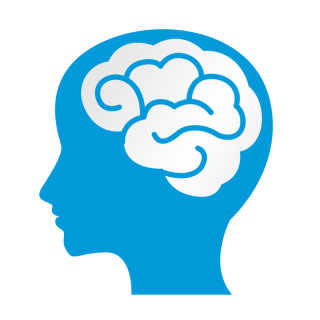'It's good to talk': Why language is important for mental health
Mental health is defined as a state of wellbeing in which every individual recognises his or her own potential, can cope with the normal stresses of life, can work productively and fruitfully, and is able to make a contribution to his or her own community. World Health Organisation, August 2014
It’s Children’s Mental Health Week and the importance of good mental health and wellbeing is at the forefront of the media. Recent statistics estimate that 1 in 8 children aged 5-19 (12.8% of young people) has a social, emotional and mental health (SEMH) disorder which impacts on their social development & learning (NHS Statistics, 2018).
Language is an essential tool for identifying, reflecting on, and communicating our thoughts and emotions. It is important for regulating our behavioural/emotional states and maintaining good relationships with peers and family. It is therefore not surprising that prospective longitudinal studies indicate children with developmental language disorder (DLD), are twice as likely as peers with typical language development to experience SEMH concern (Yew & O’Kearney, 2013).
Adolescence is a particularly vulnerable period for children: peer interaction requires more subtle and often ambiguous linguistic and non-verbal communication, and academic success involves increasingly complex language.
The Surrey Communication and Language in Education Study (SCALES) is currently investigating the role of language in SEMH development in three areas: Emotion Recognition, Emotion Regulation, and Social Relationships.
Emotion Recognition
Emotion recognition involves nuanced vocabulary that is essential for recognising and communicating how we and other people feel. Children who are better at naming their own emotions and the emotions of other people tend to find it easier to make friends and have lower levels of anxiety and depression. Having good emotion knowledge has even been linked to academic success (Denham et al, 2012).
How does SCALES measure Emotion Recognition?
We tested children’s abilities to recognise emotions in verbal (tone of voice) and non-verbal experiments (facial expression). In both tasks, children had to label the emotion expressed from a choice of ‘Happy’, ‘Sad’, ‘Angry’, ‘Scared’, ‘Surprised’, ‘Disgust’. We are interested to see if children with DLD find it harder to recognise emotions regardless of whether the stimuli are faces or voices. We will also investigate whether performance on this task is related to other measures of SEMH.
Emotion Regulation
Emotion regulation (ER) refers to our ability to monitor, evaluate and modify our emotional reaction to situations in order to suppress socially inappropriate responses. At school, children are often taught these strategies such as ‘counting to 10’, or using the ‘zones of regulation’ where children associate colours with moods with an aim to return to the ‘green zone’ (i.e. ‘content’) by using ER strategies. As we get older, we develop different skills to regulate our emotions such as ‘self-talk’, where we remind ourselves that ‘it could be worse’, or ‘tomorrow is another day’. A greater ability to use emotion regulation strategies is linked to higher levels of social competence (e.g. success in forming relationships with peers). Using certain emotion regulation strategies in everyday life has also been associated with better well-being (Bruehlman-Senecal et al, 2016).
How does SCALES measure Emotion Regulation?
SCALES has investigated an emotion regulation strategy called ‘Temporal Distancing’: by imagining oneself in the future, one can reduce stress related to current life events. We asked children to imagine different negative or neutral events. After thinking about the event happening today, we then asked them to imagine how that event would affect them either (a) right now, (b) next week or (c) many years from now. Children then rated their emotions (on a scale of ‘very unhappy’ to ‘very happy’), to say how they felt about the situation right now.
Our initial results suggest that our children (aged 10-11 years) feel less bad about a negative event if they imagine it’s effects in the future (next week / many years from now) relative to how they feel if the they imagine its effects right now. This suggests they can use temporal distancing strategies to regulate emotions. However, many children with language disorder struggled with this task. Some indicated it was difficult to imagine what the future would be like, while others found it hard to imagine how they would feel in a hypothetical situation. We will be looking further into how these challenges affect the mental health of children with language disorder.
SCALES will investigate other ways children regulate their emotions in the next phase of assessments (in Year 8), such as ‘positive reappraisal.’ This involves thinking about a positive event to reduce negative feelings associated with a different event. Reappraisal has been shown to both increase happiness and resilience and to reduce negative emotions and stress (Gross & John, 2003), but again, is critically dependent on having sufficient language to recall relevant events in detail.
Social Relationships
An important part of developing peer relationships is to understand other people’s emotions and feelings and to recognise that the thoughts and intentions of others may be different to those of our own. Children with good language skills typically have more advanced ‘theory of mind’ (TOM) and tend to form good, supportive peer relationships, which helps protect against mental health difficulties during adolescence.
How does SCALES measure Social Relationships?
SCALES has been measuring TOM at different time points to look at how performance on these tasks relates to both language and other social measures. However, children with language disorders tend to perform less well on explicit measures such as TOM tasks due to them being highly verbal. This makes performance challenging to interpret.
The SCALES children, their parents and teachers have completed questionnaires about their experiences at school and their friendships. This will enable us to determine whether adolescents with DLD experience more social challenges. We are also able to see whether the views of teachers and parents correspond to those of the children themselves.
~~~~~~~~~~~~~~~~~~~~~~~~~~~~~~~~~
We are fortunate to be able to look at long term relationships between language and mental health. Our on-going analyses are suggesting that these relationships are extremely complex and even though risk for poor mental health is increased, the majority of children with language disorder are happy and socially well-adjusted. For example, given a population prevalence of poor SEMH of 12.5%, and evidence that language disorder doubles that risk, we anticipate about 25% of children with language disorder will have significant SEMH concerns. We are exploring the possibility that risk increases when other social or developmental concerns are also present.
In tackling adolescent mental health concerns, we are all agreed that it is ‘good to talk’ – through SCALES we hope to raise awareness that some children will need more support to find the words they need to improve their well-being.
